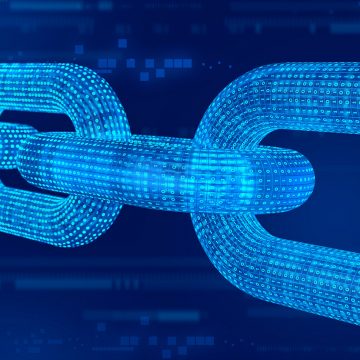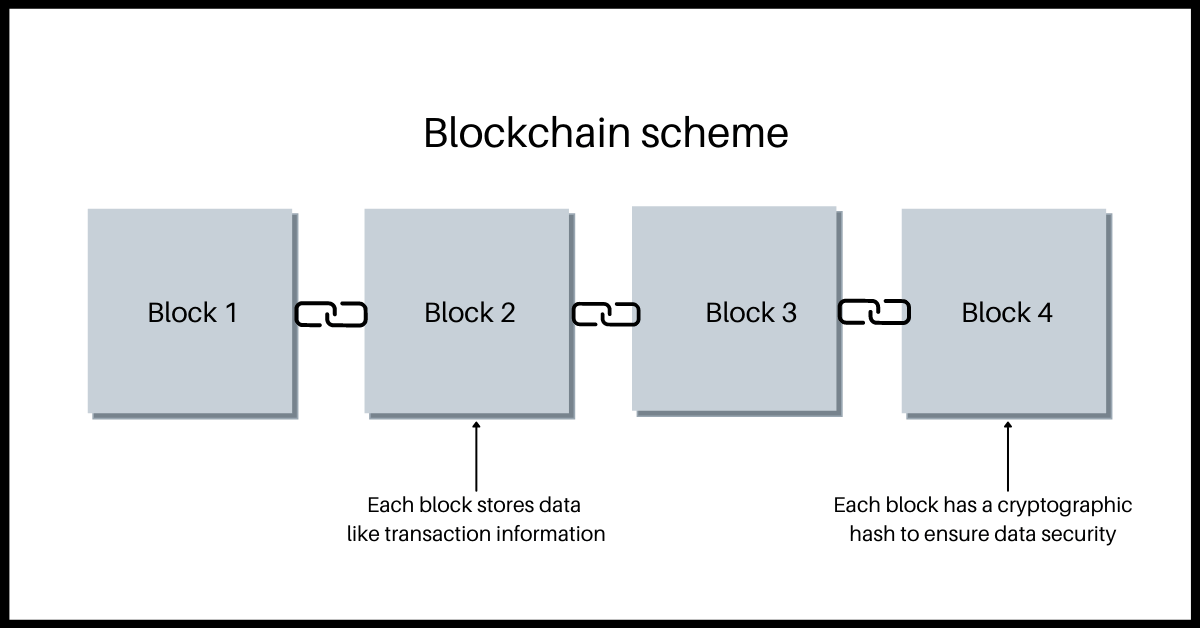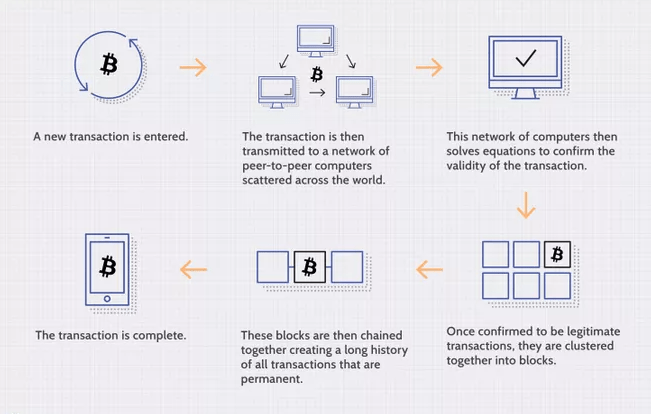
Today’s article is devoted to the blockchain technology: its history, work nuances, main types, and spheres of application – all main answers are given.
What is the idea of blockchain
Blockchain is a digital database accessed by most users online. It is an unchangeable distributed digital information register, containing data about transactions among other things.
This technology writes down the data in special blocks, inextricably bound to each other. Each block of the chain has certain containers for data storage that close as soon as they are full and get bound to a block received previously, creating the chain.
Each block of the chain gets an exact time mark as soon as it is added to the chain. As long as each block contains information about the previous one, the chain contains information about each operations ever carried out in the database.
Already-existing blocks cannot be removed or edited – only new ones can be added. This peculiarity makes hacking and editing the content of the register impossible.

When and how blockchain appeared
The first blockchain-like technology was suggested by a cryptographer David Chaum in 1982. In 1991, the basics of blockchain were described in an article by Stuart Haber and Scott Stornetta. They introduced a special computing solution for digital documents with a time stamp, so that files cannot be edited afterwards.
In 2004, a programmer and crypto activist Hal Finney created an algorithm called RPoW (Reusable Proof of Work). This technology became popular within cryptocurrency systems.
In 2008, the blockchain technology helped to create the bitcoin. Its creator is thought to be a person or a group of people under the penname Satoshi Nakamoto. The first person to receive the bitcoin was Hal Finney: on 12 January, 2009 Satoshi Nakamoto sent him 10 BTC.
How blockchain works
- Transaction is a data exchange between two people. All transactions within the network (money depositing and withdrawal) have a unique 256-bit number called “hash”. It normally looks like a random set of letters and digits. A sequence of hashes linked to each other create a safe interconnected chain.
- Confirmation is a process of checking compliance of a transaction with the protocol. Transactions are checked in nods. Upon successful validation, the transaction gets written down into a block.
- Examination is data control in a block. Before the block gets linked to the chain, the algorithm examines it for any past editing. The rules by which examination is carried out are called consensus.
- Mining is a process of “solving the equation” (creating a new block) by variable selection. This algorithm is called Proof of Work.
- Protection is eliminating from the chain a block that has been edited. Changes in one block lead to changes in all subsequent blocks. The system detects them fast and reacts accordingly.

What types of blockchain exist
- Public blockchains are open decentralised networks of computers available to anyone who wants to claim for or confirm a transaction. Miners who confirm transactions get rewarded for it.
- Private blockchains are closed systems with limited access. To enter the system, one needs permission from the system administrator. As a rule, such blockchains are managed by just one object, i.e. they are centralised.
- Consortium blockchains unite public and private types. The coordination process is carried out by several elected equal nods. For example, a consortium of 10 banks agree on considering valid those blocks that have a multisignature of at least 5 banks.
Where is blockchain used
The system is actively developing, taking root in various spheres of economy:
- cryptocurrencies,
- NFT,
- banking sector and finance,
- stock exchanges,
- gaming industry,
- cyber safety,
- voting systems in election.
Bottom line
Blockchain is a data processing technology of processing, storing, and sending data. Every day it enjoys more and more demand. The system was created long ago but started developing after cryptocurrencies appeared and became popular. Today blockchain has become mainstream, integrated in various spheres of the society and sectors of global economy.
